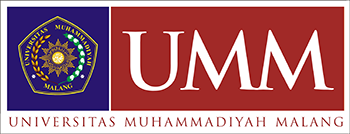Analysis of Human Resources Capacity for Cultural Heritage Managers in Bengkulu City
DOI:
https://doi.org/10.22219/logos.v6i2.23245Abstract
Cultural heritage is a regional potential asset that can contribute to economic growth, optimal management of cultural heritage is beneficial for the progress of tourism centers. Bengkulu City is one of the cities that has the potential for cultural heritage, which, if managed optimally can have an impact on the economic growth of Bengkulu City. However, the strategic allocation of human resources has not been done well. This study aims to determine how the capacity of human resources for cultural heritage managers in Bengkulu City is. The research method uses qualitative descriptive, data collection is carried out through in-depth interviews and group discussions. We analyzed six informants consisting of cultural heritage managers in the Bengkulu region assigned by the Jambi Province's Jambi Cultural Heritage Preservation Center (BPCB). Data analysis and interpreting the meaning of factual data are carried out qualitatively, and the results of the study show that the availability of human Resources (HR) both in quality and quantity has not been in accordance with the standards for developing human resources for cultural heritage. In addition, the lack of regional participation in increasing institutional capacity related to cultural heritage management has an impact on the non-optimal management of cultural heritage in the Bengkulu City.
Downloads
References
Allais, S. (2023). Why skills anticipation in African VET systems needs to be decolonized: The wide-spread use and limited value of occupational standards and competency-based qualifications. International Journal of Educational Development, 102(August), 102873. https://doi.org/10.1016/j.ijedudev.2023.102873
BPCBJ. (2021). Renstra 2020-2024. Jambi.
Budiningtyas, R. E. S. (2013). Showroom Batik di Kampoeng Batik Laweyan Respon Masyarakat Terhadap Pengembangan Pariwisata di Kawasan Cagar Budaya. Jurnal Nasional Pariwisata, 5(3), 168–179. https://doi.org/10.22146/jnp.6690
Carbone, F., Oosterbeek, L., Costa, C., & Maria, A. (2020). Extending and adapting the concept of quality management for museums and cultural heritage attractions : A comparative study of southern European cultural heritage managers' perceptions. Tourism Management Perspectives, 35(March 2019), 100698. https://doi.org/10.1016/j.tmp.2020.100698
Carrà, N. (2021). Health and Well-Being Through Cultural Heritage Enhancement Strategies. Cultural Welfare and Integrated Sustainability for Fostering Healthy Lifestyles BT - New Metropolitan Perspectives (C. Bevilacqua, F. Calabrò, & L. Della Spina (eds.); pp. 274–284). Springer International Publishing.. https://doi.org/10.1007/978-3-030-48279-4_26
Chu, V. H. Y., Lam, W.-F., & Williams, J. M. (2023). Building robustness for rural revitalization: A social-ecological system perspective. Journal of Rural Studies, 101(July 2023), 103042. https://doi.org/https://doi.org/10.1016/j.jrurstud.2023.103042
Darmi, T., & Mujtahid, I. M. (2021). Strengthening the Capacity of Partnership-Based Cultural Heritage Management to Increase Tourism Visits. Publik (Jurnal Ilmu Adminsitrasi), 10(1), 18–27. http://dx.doi.org/10.31314/pjia.10.1.18-27.2021
Darmi, T., & Suwitri, S. (2017). Strengthening the Capacity of Human Resources Apparatus in the Implementation of New Autonomous Regions. European Journal of Social Sciences, Vol. 55 No, 427–438.
Darmi, T., Suwitri, S., Yuwanto, & Sundarso. (2016). The Capacity Of Local Leaders To Improve Performance Of New Autonomous Region (DOB) in Indonesia (Case Study on The Regional Province of Bengkulu Seluma Regency). In Yan Xioang (Ed.), Innovation in Regional Public Service For Sustainability (p. 104). https://doi.org/10.29991/icpm-16.2016.27
Dela Santa, E., & Tiatco, S. A. (2019). Tourism, heritage, and cultural performance: Developing a modality of heritage tourism. Tourism Management Perspectives, 31(May), 301–309. https://doi.org/10.1016/j.tmp.2019.06.001
Durrant, L. J., Vadher, A. N., & Teller, J. (2023). Disaster risk management and cultural heritage: The perceptions of European world heritage site managers on disaster risk management. International Journal of Disaster Risk Reduction, 89(May 2022), 103625. https://doi.org/10.1016/j.ijdrr.2023.103625
Hakim, A. H. (2016). Integrasi Di Kawasan Strategis Cagar Budaya Benteng Malborough, Bengkulu. Jurnal Tekno Global UIGM Fakultas Teknik, 5(1), 27-32. https://doi.org/10.36982/jtg.v5i1.93
Hidalgo-Sánchez, F. M., Carrascal-Pérez, M. F., Rey-Pérez, J., Plaza, C., & Mascort-Albea, E. J. (2022). Cultural Heritage, Sustainability, Conservation, and Social Welfare. A Management Plan for the Historic Municipal Buildings of Seville (Andalusia, Spain). The Historic Environment: Policy & Practice, 13(4), 426–458. https://doi.org/10.1080/17567505.2022.2146332
Huh, J., Uysal, M., Mccleary, K., & Mccleary, K. (2013). Cultural/Heritage Destinations: Tourist Satisfaction and Market Segmentation. Journal of Hospitality & Leisure Marketing, (March 2013), 37–41. https://doi.org/10.1300/J150v14n03
Hung, H. (2015). Governance of built-heritage in a restrictive political system: The involvement of non-governmental stakeholders. Habitat International, 50(December 2015), 65–72. https://doi.org/10.1016/j.habitatint.2015.08.006
Hutapea, P., & Thoha, N. (2008). Kompetensi plus : teori, desain, kasus, dan penerapan untuk HR dan organisasi yang dinamis. Retrieved from https://opac.perpusnas.go.id/DetailOpac.aspx?id=680356
Innocente, C., Ulrich, L., Moos, S., & Vezzetti, E. (2023). A framework study on using immersive XR technologies in the cultural heritage domain. Journal of Cultural Heritage, 62(July–August 2023), 268–283. https://doi.org/https://doi.org/10.1016/j.culher.2023.06.001
Ismagilova, G., Safiullin, L., & Gafurov, I. (2015). Using Historical Heritage as a Factor in Tourism Development. Procedia - Social and Behavioral Sciences, 188(2015), 157–162. https://doi.org/10.1016/j.sbspro.2015.03.355
Keumala, S. O., & Pribadi, U. (2021). Government Innovation in Social Sciences : A Literature. Journal of Local Government Issues (LOGOS), 4(2), 170–184. https://doi.org/https:// doi.org/10.22219/logos.v4i2.15271
Kolay, S. (2016). Cultural Heritage Preservation of Traditional Indian Art through Virtual New-media. Procedia - Social and Behavioral Sciences, 225(November 2015), 309–320. https://doi.org/10.1016/j.sbspro.2016.06.030
Kusuma, T. A. B. N. S., Witono, A., & Damai, A. H. (2021). Evaluasi pada Pengelolaan, Pemanfaatan, dan Pelestarian Cagar Budaya Berkualitas pada Situs Majapahit Trowulan. Jurnal Panalungtik, 4(1), 47–60. https://doi.org/10.24164/pnk.v4i1.61
Li, P., Xiao, X., & Seekamp, E. (2022). Climate adaptation planning for cultural heritages in coastal tourism destinations : A multi-objective optimization approach. Tourism Management, 88, 104380. https://doi.org/10.1016/j.tourman.2021.104380
Lucas-Palacios, L., Trabajo-Rite, M., & Delgado-Algarra, E. J. (2023). Heritage education in initial teacher training from a feminist and animal ethics perspective. A study on critical-empathic thinking for social change. Teaching and Teacher Education, 129. https://doi.org/10.1016/j.tate.2023.104153
Medda, F., & Lipparini, F. (2021). Impact investment for urban cultural heritage. City, Culture and Society, 26, 100413. https://doi.org/https://doi.org/10.1016/j.ccs.2021.100413
Monika Murzyn‐Kupisz, J. D. (2013). Cultural heritage in building and enhancing social capital. Journal of Cultural Heritage Management and Sustainable Development, 3(1),35-54. https://doi.org/10.1108/20441261311317392
Mulia, R. A. (2018). Analisis Faktor-faktor yang Mempengaruhi Kualitas Laporan Keuangan Pemerintah Daerah (Studi pada Pemerintah Kabupaten Pasaman Barat). Jurnal El-Riyasah : Jurnal Kepemimpinan Dan Administrasi, 9(1), 1–15. http://dx.doi.org/10.24014/jel.v9i1.6798
Nafila, O. (2013). Peran Komuninas Kreatif dalam Pengembangan Pariwisata Budaya di Situs Megalithikum Gunung Padang. Jurnal Perencanaan Wilayah dan Kota, 24 (1).
Nebbia, M., Cilio, F., & Bobomulloev, B. (2021). Spatial risk assessment and the protection of cultural heritage in southern Tajikistan. Journal of Cultural Heritage, 49, 183–196. https://doi.org/10.1016/j.culher.2021.01.012
Ningrum, N. S., Harjanto, U. S., & Prihatin, E. S. (2016). Pengelolaan Benda Cagar Budaya di Museum Ronggowarsito Menurut Undang-Undang Republik Indonesia Nomor 11 Tahun 2010 tentang Cagar Budaya. Diponegoro Law Review, 5(2), 1–11. https://doi.org/10.14710/dlj.2016.11044
Oladeji, S. O., Grace, O., & Ayodeji, A. A. (2022). Community Participation in Conservation and Management of Cultural Heritage Resources in Yoruba Ethnic Group of South Western Nigeria. SAGE Open, 12(4). https://doi.org/10.1177/21582440221130987
Pratiwi, D. I., Zahra, J. A. A., & Aliyah, I. (2022). Konservasi Kawasan Heritage. Cakra WIsata, 23 (2), 34-52. Retrieved from https://jurnal.uns.ac.id/cakra-wisata/article/view/70114/39668
Quintana, D. C., Díaz-puente, M., & Gallego-moreno, F. (2022). Architectural and cultural heritage as a driver of social change in rural areas : 10 years ( 2009 – 2019 ) of management and recovery in Huete , a town of Cuenca , Spain. Land Use Policy, 115(February). https://doi.org/10.1016/j.landusepol.2022.106017
Reshma, M. R., Kannan, B., Raj, V. P. J., & Shailesh, S. (2023). Cultural heritage preservation through dance digitization: A review. Digital Applications in Archaeology and Cultural Heritage, 28(March 2023), e00257. https://doi.org/https://doi.org/10.1016/j.daach.2023.e00257
Selo, L., Ode, La Elwan, M., & Rizal, A. (2018). Strategi Pengembangan Kapasitas Kepemimpinan dalam mewujudkan Peningkatan Kinerja Pengelolah Jabatan pada Badan Kepegawaian Daerah Provinsi Sulawesi Tenggara. Journal Publicuho, 1(3), 33–39. http://dx.doi.org/10.35817/jpu.v1i3.6475
Sugihartoyo, Sugihartoyo, & Wahyu A. Widagdo. (2010). Strategi Pengembangan Wisata Kota Tua sebagai Salah Satu Upaya Pelestarian Urban Heritage (Studi Kasus: Koridor Kali Besar, Jakarta Barat)." Planesa, 1(1).
Sustianingsih, I. M. (2020). Pemanfaatan Museum SUBKOSS sebagai Sumber Belajar Sejarah Di Lubuklinggau. Criksetra: Jurnal Pendidikan Sejarah, 9(1), 1–14. https://doi.org/10.36706/jc.v9i1.10260
Syaifulloh, M., & Wibowo, B. (2016). Pemanfaatan Benda Cagar Budaya Sebagai Potensi Pariwisata dan Ekonomi Kreatif bagi Masyarakat Sekitar di Kota Pontianak Kalimantan Barat. Sejarah Dan Budaya, 10(2), 222-232. Retrieved from http://journal2.um.ac.id/index.php/sejarah-dan-budaya/article/view/1529/823
Utami, I. P., Hadi, K., & S, Y. (2019). Regional Government Strategies In The Development Of Sumenep Keraton TourismIn The Perspective Collaborative Governance. LOGOS JOURNAL, 2(1).
Wang, M.-Y., Li, Y.-Q., Ruan, W.-Q., Zhang, S.-N., & Li, R. (2024). Influencing factors and formation process of cultural inheritance-based innovation at heritage tourism destinations. Tourism Management, 100(February 2024), 104799. https://doi.org/10.1016/j.tourman.2023.104799
Wardekker, A., Nath, S., & Handayaningsih, T. U. (2023). The interaction between cultural heritage and community resilience in disaster-affected volcanic regions. Environmental Science and Policy, 145(April), 116–128. https://doi.org/10.1016/j.envsci.2023.04.008
Zhang, L. (2022). Empowering linked data in cultural heritage institutions : A knowledge management perspective. Data and Information Management, 6(3), 100013. https://doi.org/10.1016/j.dim.2022.100013
Downloads
Published
How to Cite
Issue
Section
License
Copyright (c) 2023 Titi Darmi, Iqbal Miftahul Mujtahi, Bella Dian Nusantara

This work is licensed under a Creative Commons Attribution-ShareAlike 4.0 International License.
Authors who publish with this journal agree to the following terms:
- Authors retain copyright and grant the journal right of first publication with the work simultaneously licensed under a Creative Commons Attribution-ShareAlike 4.0 International License. that allows others to share the work with an acknowledgment of the work's authorship and initial publication in this journal.
- Authors are able to enter into separate, additional contractual arrangements for the non-exclusive distribution of the journal's published version of the work (e.g., post it to an institutional repository or publish it in a book), with an acknowledgment of its initial publication in this journal.
- Authors are permitted and encouraged to post their work online (e.g., in institutional repositories or on their website) prior to and during the submission process, as it can lead to productive exchanges, as well as earlier and greater citation of published work (See The Effect of Open Access).

This work is licensed under a Creative Commons Attribution-ShareAlike 4.0 International License.













